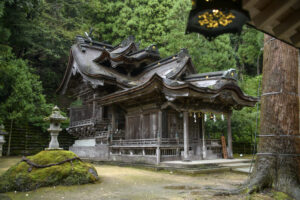
For Mio Suhara, peace and productivity come with free refills of coffee, soda and soft-serve ice cream.
Two or three times a week, the 54-year-old blogger retreats to her local Kaikatsu Club — an internet cafe chain that commands roughly half the Japanese market — where a private booth doubles as her workspace and her sanctuary.
“This is basically my second home,” she says with a laugh. In fact, she’s currently speaking via video chat from a booth at her local Kaikatsu Club.
Suhara lives in Ageo, a suburban city in Tokyo’s neighboring Saitama Prefecture, with her aging mother and younger brother.
A sign promoting an internet cafe in Tokyo’s Akihabara district offers an hour rate for ¥980.
| JOHAN BROOKS
“I’m currently taking a break from work, so I’ve been coming here a lot,” she continues. “I mostly write blog posts here because I can’t really focus at home. I usually come in around noon and leave in the evening using the six-hour plan.”
Once the domain of gamers, drifters and salarymen, Japan’s netto kafe (internet cafes) are reinventing themselves for a new generation chasing comfort, solitude and Wi-Fi — even as the market for such spaces continues to shrink.
Gone are the days of smoky, male-dominated dens. Modern net cafes tout well-lit interiors, cleaner environments and private cubicles, marketing themselves as places for recreation, rest and remote work. For a loyal core of users like Suhara, these spaces endure as a casual refuge from today’s fast-paced society.
“One of my hobbies is traveling around on my moped,” says Suhara, who blogs about her trips and other topics. “When I toured Chiba Prefecture recently, I actually planned my route around Kaikatsu Club outlets so I could stay overnight in their private rooms. They’re cheaper than a hotel.”
Booths and bytes
Before they became work spaces or overnight refuges, these cafes began as a uniquely Japanese response to a love of comics and coffee.
In the 1970s, Aichi Prefecture — already known for its distinctive kissaten (coffeehouse) culture — saw a new kind of cafe called “manga kissa” take shape. Specializing in Japanese comics, these cafes offered patrons a simple pleasure: sipping coffee while leafing through vast manga libraries that few individual collectors could afford.
As manga’s popularity soared through the 1980s, cafe proprietors began to focus solely on the reading aspect of their businesses, transforming their spaces into destinations for comics, not caffeine. That shift sparked an innovation that would define the industry for decades to come: time-based pricing. Customers paid by the hour, creating a business model that encouraged longer stays and repeat visits.
Men make use of an internet cafe in Tokyo in 2007. It was around 2008 that such net cafes are believed to have reached their peak in terms of popularity, with thousands of such spaces operating across the country.
| REUTERS
The internet cafe came to Japan much later, inspired by cybercafes in the United States that emerged in the early 1990s. In areas like Akihabara, experimental venues appeared with simple rooms and rows of personal computers for public use lining the walls. Electronic Cafe Tokyo, which opened in Shibuya in the mid-1990s, exemplified the model: bare, utilitarian and minimal. But in high-rent Tokyo, that spartan approach struggled to turn a profit.
By the late 1990s, the two worlds began to merge. Manga cafes added terminals powered by increasingly available high-speed internet, and internet cafes adopted the time-based billing system. Major players such as Space Create Jiyu Kukan, Comic Buster and Media Cafe Popeye emerged with countrywide ambitions and, in 2001, the Japan Complex Cafe Association (JCCA) was founded.
“We’ve been working to improve standards across the industry while tracking the number of member cafes and the market’s overall size,” says JCCA administrator Motoko Kudo. “However, the number of shops has been in steady decline.”
By the early 2000s, hybrid fukugō (multimedia) cafes (defined by the JCCA as “complex cafes”) had evolved into full-fledged entertainment hubs. Beyond manga and internet access, they offered video games, karaoke, darts, films and food service — whatever would keep customers comfortable and coming back. But growth brought complications. The anonymity provided by the public terminals allowed for online scams and malicious posting.
The boom in 24-hour operations also created a population of so-called netto kafe nanmin (net cafe refugees): people without homes who relied on the spaces as cheap overnight shelters. Some venues even became hideouts for criminals. In 2008, when the cafes were at their peak, a fire killed 16 people at one Osaka video booth establishment, raising concerns over safety. Net cafes had become symbolic for a host of social problems.
Modern internet cafes evolved from manga cafes that were popular in the 1970s and ’80s, with many still boasting vast collections of comics.
| JOHAN BROOKS
The 2010s brought a new wave of disruption — not from crime or catastrophe, but from smartphones. As ownership surged, cafes lost their edge as gateways to the web. A more empowered clientele would only be enticed by cleaner spaces with more privacy, forcing major chains to compete by upgrading their facilities. That race to modernize accelerated overall closures by pushing smaller, shabbier operators out of the market.
The COVID-19 pandemic and its lockdowns only deepened the industry’s decline, emptying city branches and hastening a shakeout already underway. According to JCCA, the number of cafes dropped from 1,916 in 2014 to 1,063 in 2024, while market size shrank from ¥136.1 billion to ¥110.2 billion during the same 10-year period.
Kaikatsu Club endured. By rebranding its lockable rooms as safe, private spaces for budding entrepreneurs and freelancers, it transformed from late-night refuge into sanitized co-working hub — a rare survivor of Japan’s net cafe evolution.
Lock and lounge
The fourth-floor entrance of the Kaikatsu Club outlet near Tokyo’s Akihabara Station features a manned reception desk and automated check-in booths where guests can choose the plan that best suits their stay. First-timers must register for membership with a piece of identification, after which they can use any Kaikatsu Club branch in the country.
Past the reception area are rows of small booths and shelves packed with comics and magazines, along with vending machines offering free drinks, a microwave, and a shower room and bathroom. The space has a Bali-themed interior, which adds to an overall feeling of relaxation. Upstairs, the fifth and sixth floors are devoted to lockable private rooms, plus a darts room where several groups are playing.
“Some guests just come in to play darts,” says Nao Oshiro, Kaikatsu Club’s spokesperson, as she leads a tour of the facility. “Others spend their days off here, work remotely or drop by after work to relax.”
Kaikatsu Club in Akihabara, Tokyo. 2025/10/27
| JOHAN BROOKS
The clientele on today’s tour seems relatively diverse — a middle-aged businessman in a slick suit rolls his suitcase toward a private room, a woman who looks to be in her mid-30s steps out of her cubicle for a cup of coffee. A pair of tourists, perhaps from Southeast Asia, walk past, and Oshiro notes that despite attempts at an English-friendly system, foreign nationals still make up a mere 2% of the customer base. The two enter their room, and the lock clicks.
Oshiro says the rise of remote work during the pandemic fueled demand for fully lockable private rooms, which were first introduced in 2018. Business use, in particular, has been growing, with users taking advantage of the high-speed Wi-Fi to join meetings, prepare documents or organize materials while on business trips or between sales appointments. The demand for spaces functioning as mobile offices is expected to keep rising, she says.
Kaikatsu Club, which opened its first outlet in July 2003, is operated by Kaikatsu Frontier, a subsidiary of Aoki Holdings — the menswear giant behind the Aoki suit brand — and has become the undisputed leader of Japan’s internet cafe market. As of last month, it was running 496 outlets nationwide, roughly half of all internet cafes in Japan.
Establishments vary in terms of perks. Some offer only private rooms, while others include open seating or recreation zones with darts, billiards or karaoke. Prices and amenities also differ by location, but at the Akihabara branch a private room costs ¥950 ($6.25) for the first 60 minutes and ¥160 for every 10 minutes thereafter, or ¥2,970 ($18.40) for a six-hour package and ¥7,720 ($50.80) for 24 hours.
Showers are separated by gender and free to use, some offer free towels and toiletries. There’s also a laundromat, blankets and hot water available. Food and drinks from the cafe’s drink bar can’t be taken into private rooms, however, a rule imposed under police guidance for safety reasons.
By far the most-requested amenity at a net cafe is a lockable door for privacy, allowing customers to treat their room like a small office.
| JOHAN BROOKS
While the fourth floor retains some of the air of the old net cafe era, the fifth and sixth floors are quieter, feeling more like the halls of a hotel.
“We’ve managed to buck the overall trend of a shrinking market by transforming ourselves from a comics and internet cafe into a multipurpose leisure space catering to a wide range of users,” says Oshiro, who began her career working part-time at a Kaikatsu Club outlet in Kansai before joining the company full time.
“Kaikatsu Club’s managers routinely visit competitors and high-performing stores, analyze their operations and test new ideas before rolling them out nationwide,” she adds. “Because we’re a fully company-owned chain, we can act quickly and make calculated adjustments in response to shifting lifestyles and trends.”
The new hangout
After achieving nationwide coverage in 2021, Kaikatsu Frontier began focusing on smaller urban branches near major train stations — compact cafes of about 60 tsubo (roughly 200 square meters) equipped entirely with lockable private rooms. These station-front cafes are designed for convenience and privacy, catering to solo visitors and remote workers who now make up a growing share of its clientele.
The chain operator has seen its revenue grow from ¥48.57 billion in the fiscal year ending March 2021 to ¥72.58 billion in the year ending March 2025. Still, challenges remain. Kaikatsu Frontier’s medium-term plan targets a 60% occupancy rate for its urban stores and aims to boost its female customer ratio from 24.5% to 35%. The brand continues to battle long-held perceptions of internet cafes as dingy, mostly male spaces.
“I haven’t been to Kaikatsu Club myself, but one reason for the decline of internet cafes in general is their poor image,” says Naoko Kuga, a senior researcher at the NLI Research Institute. “They’ve often been associated with crime or fraud as spaces where shady online activities happen. That negative image still lingers, though I hear modern internet cafes have a very different atmosphere.”
Kaikatsu Club in Tokyo’s Akihabara electronics district retains some of the charm of net cafes of the past.
| JOHAN BROOKS
While Kaikatsu Club leads in terms of the number of outlets, the market is shared by several other major chains, including DiCE, Aprecio and Jiyu Kukan — the latter of which is now owned by Kaikatsu Club parent company Aoki Holdings. The websites for all the cafes make sure to emphasize their sleek interiors, private rooms and amenities.
“You see similar setups (to Kaikatsu Club) popping up at train stations now. But in today’s digital environment, the challenge is how to stand out,” Kuga adds. “What used to be a differentiating feature has now become standardized — almost templated. It’s a difficult business model.”
Net cafes are also facing competition from coworking services such as WeWork, though many of those spaces target white-collar professionals and start-up teams that require multiperson rooms and can afford higher rates. Net cafes aim for a more cost-conscious demographic that includes students and travelers seeking flexibility.
So far, Kaikatsu Club plans to continue expanding its network of private-booth cafes domestically while refining its menus, seating options and services to meet the diverse and evolving needs of Japan’s urban population. Mio Suhara, the blogger and Kaikatsu Club regular, recalls how different things used to be.
“When I was younger, manga cafes didn’t have many private rooms or booths, so in terms of comfort, today’s spaces are far better,” she says. “Back then, they were dimly lit and didn’t feel very clean. In that sense, Kaikatsu Club has changed the image, making bright, welcoming net cafes the norm.”
Suhara is also a platinum member, a status reserved for customers who spend ¥10,000 or more a month, and she earns extra in-store points with every payment.
“For me, this place is like a vacation home,” she says. “I don’t think I’ll ever stop coming here.”





